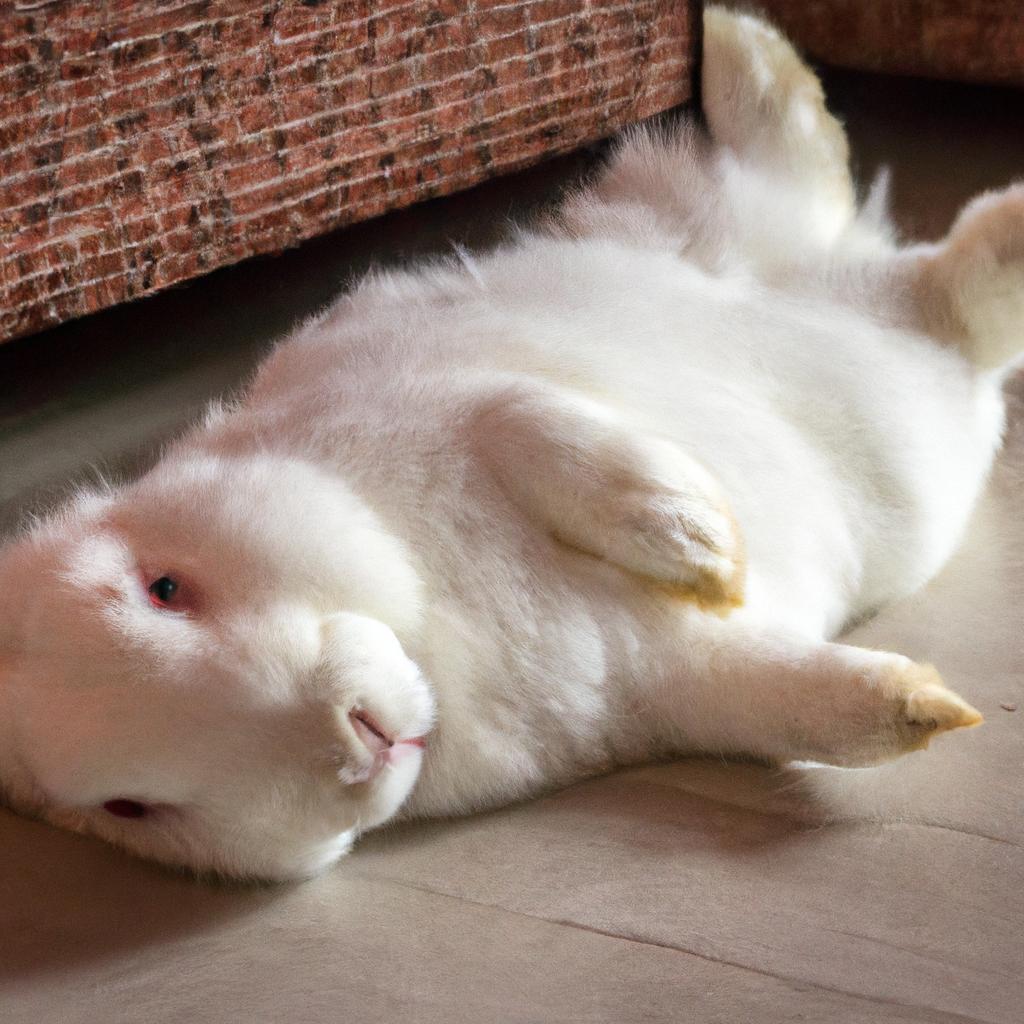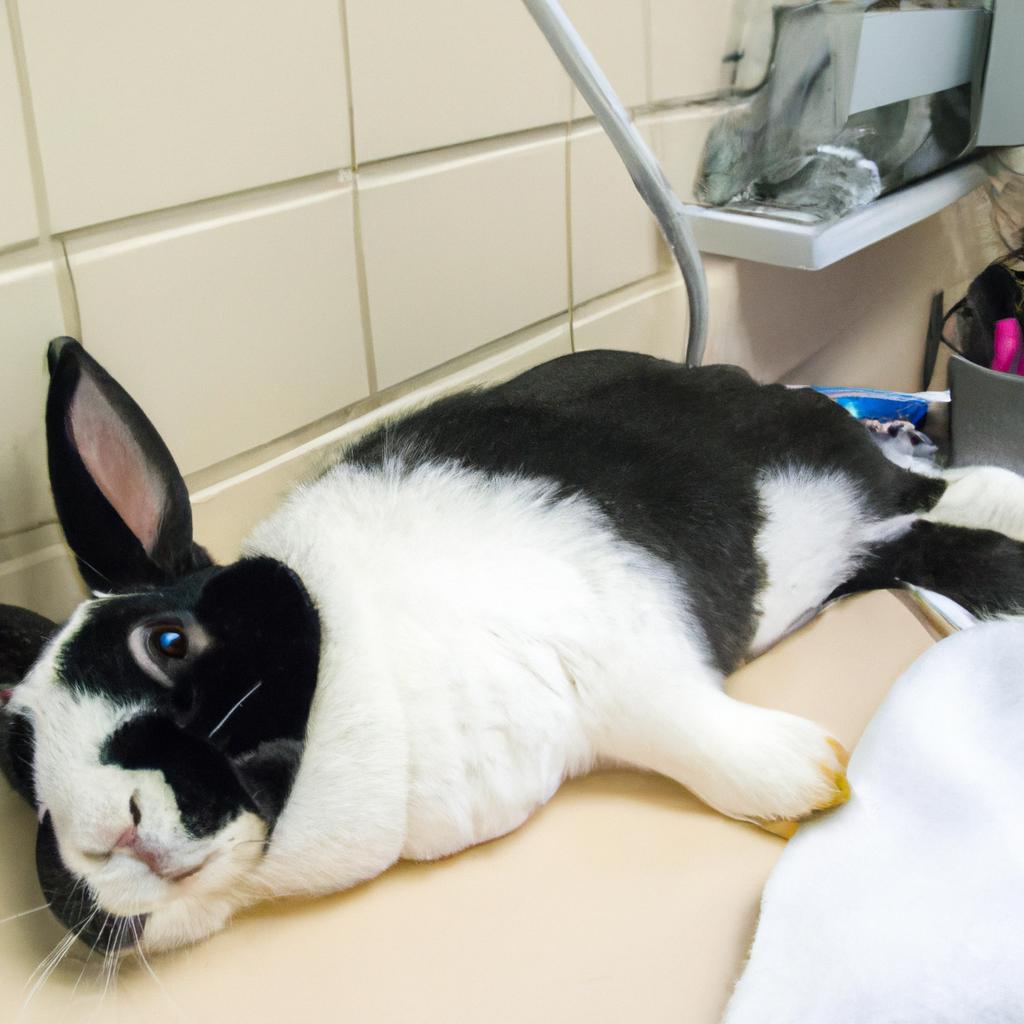Rabbit Laying on Side: Understanding the Behavior of Your Furry Friend

Have you ever seen your rabbit lying on its side and wondered what it meant? As a rabbit owner, it’s essential to understand your furry friend’s behavior to ensure their health and well-being. One behavior that might concern you is when a rabbit lays on its side. In this article, Rabbitfact‘ll explore the causes, symptoms, and treatment of rabbit laying on the side.
Rabbits are fascinating creatures with unique body language and behavior. Understanding your rabbit’s behavior is crucial to recognize when something is wrong. One behavior that might concern you is when your rabbit lays on its side. While it’s not always a cause for alarm, it’s essential to recognize the reasons behind this behavior and take action if necessary.
In this article, we’ll cover the causes of rabbit laying on the side, identify symptoms to look out for, and explore treatment and prevention methods. Whether you’re a new rabbit owner or a seasoned pro, this article will provide valuable insights into your furry friend’s behavior. So, let’s dive in and learn more about rabbit laying on the side.
Rabbit Behavior 101

As mentioned earlier, understanding rabbit behavior is crucial to recognize when something is wrong. Rabbits have unique body language and behavior, and it’s essential to understand what they mean. In this section, we’ll explore rabbit behavior 101, including common behaviors and what they mean.
Understanding Rabbit Body Language
Rabbits use body language to communicate with humans and other animals. Their body language includes ear positioning, body stance, and tail movement. For example, when a rabbit’s ears are up, it means they’re alert and interested in something. When their ears are down, it means they’re relaxed or scared. Additionally, a rabbit’s body stance can indicate whether they’re feeling safe or threatened.
Common Behaviors and What They Mean
Rabbits have a variety of behaviors, and it’s essential to understand what they mean. One common behavior is thumping, where a rabbit thumps its hind legs on the ground. This behavior can indicate danger or a warning to other rabbits. Another behavior is binkying, where a rabbit jumps and twists in the air. This behavior indicates happiness and excitement.
Importance of Recognizing Abnormal Behavior
Recognizing abnormal behavior in rabbits is crucial to ensure their health and well-being. Abnormal behavior can indicate an underlying medical condition or a stressful environment. Some examples of abnormal behavior include lack of appetite, lethargy, aggression, and excessive grooming. If you notice any abnormal behavior in your rabbit, it’s essential to seek veterinary care immediately.
Understanding rabbit behavior is essential to recognize when something is wrong. By learning about their body language and common behaviors, you can better understand your furry friend’s needs and ensure their health and well-being.
Causes of Rabbit Laying on Side

Rabbit laying on its side can be a sign of underlying health issues or behavioral problems. Identifying the cause of this behavior is crucial to ensure your rabbit’s well-being. Here are the most common causes of rabbit laying on the side:
Medical Reasons
Medical problems can cause rabbits to lay on their side. These include:
- Gastrointestinal Stasis: This is a common condition in rabbits where their gastrointestinal tract slows down or stops. It can cause discomfort, bloating, and lethargy, leading to a rabbit laying on its side.
- E. Cuniculi Infection: This is a parasitic infection that can affect a rabbit’s nervous system, leading to neurological symptoms such as head tilt or loss of balance. In severe cases, rabbits may lay on their side due to this condition.
- Heat Stroke: Rabbits are sensitive to heat, and high temperatures can cause heatstroke. This can lead to lethargy, weakness, and a rabbit laying on its side.
Behavioral Reasons
Rabbits may lay on their side due to behavioral reasons such as:
- Comfort: Rabbits may lay on their side when they feel comfortable and relaxed. This is often seen when they are sleeping or grooming themselves.
- Fear or Stress: Rabbits may lay on their side when they feel threatened or scared. This can be a sign of fear or stress, and it’s essential to identify the cause of the rabbit’s fear or stress.
Environmental Factors
Environmental factors can also cause rabbits to lay on their side. These include:
- Inadequate Living Conditions: Rabbits need a clean, spacious living environment that provides them with enough space to exercise and play. If their living conditions are inadequate, they may lay on their side due to discomfort or boredom.
- Inadequate Diet: Rabbits need a balanced diet that includes hay, fresh vegetables, and water. If their diet is inadequate, they may lay on their side due to malnutrition or digestive problems.
Identifying the cause of rabbit laying on the side is crucial to ensure their well-being. If you notice this behavior in your rabbit, it’s essential to seek veterinary advice to rule out any underlying health issues.
Identifying Symptoms of Rabbit Laying on Side
It’s essential to recognize the symptoms of rabbit laying on the side to ensure your furry friend’s health and well-being. Here are some physical symptoms to look out for:
Physical Symptoms
- Difficulty breathing or rapid breathing
- Inability to stand or walk
- Abnormal or lack of bowel movements
- Lack of appetite or difficulty eating
- Lethargy or lack of energy
- Twitching or convulsions
In addition to physical symptoms, behavioral changes can also indicate a problem. Here are some behavioral changes to watch for:
Behavioral Changes
- Lack of grooming
- Hiding or avoiding interaction
- Aggression or irritability
- Changes in vocalization
- Restlessness or distress
If you notice any of these symptoms or changes in your rabbit’s behavior, it’s essential to seek veterinary care immediately. Early intervention can make all the difference in your furry friend’s health and recovery. Don’t hesitate to contact your veterinarian if you have any concerns.
Treatment and Prevention of Rabbit Laying on Side
Medical Treatment
If your rabbit is experiencing medical issues that cause them to lay on their side, it’s essential to seek veterinary care immediately. Depending on the cause, the veterinarian may prescribe medication, therapy, or surgery to help your furry friend recover. It’s crucial to follow the veterinarian’s instructions carefully and administer medication as directed.
Behavioral Modification
In some cases, rabbit laying on the side is a behavioral issue that requires modification. If your rabbit is experiencing stress, anxiety, or boredom, it’s crucial to address the underlying cause. Providing your rabbit with plenty of toys, socialization, and exercise can help reduce stress and anxiety. Additionally, creating a predictable routine and a calm living environment can help your rabbit feel safe and secure.
Creating a Suitable Living Environment
Creating a suitable living environment is crucial to promoting your rabbit’s health and well-being. A spacious and stimulating living area with plenty of toys, hiding places, and socialization opportunities can help reduce stress and promote healthy behavior. Additionally, providing your rabbit with a healthy diet and clean water can help prevent medical issues that may cause rabbit laying on the side.
Prevention Measures
Prevention is always the best course of action. Regular veterinary check-ups, a healthy diet, and a clean living environment can help prevent medical issues that may cause rabbit laying on the side. Additionally, providing your rabbit with plenty of exercise, socialization, and stimulation can help reduce stress and anxiety, promoting healthy behavior.
By taking a proactive approach to your rabbit’s health and well-being, you can help prevent issues that may cause rabbit laying on the side. Whether it’s medical treatment, behavioral modification, creating a suitable living environment, or prevention measures, it’s essential to take action if your rabbit experiences this behavior.
Conclusion
In conclusion, understanding your rabbit’s behavior is crucial to ensure their health and well-being. One behavior that might concern you is when your rabbit lays on its side. As we’ve learned, there can be several reasons for this behavior, including medical, behavioral, and environmental factors.
It’s essential to identify the symptoms of rabbit laying on the side, such as physical symptoms and behavioral changes. If you notice any unusual behavior, it’s crucial to take action and seek veterinary care if necessary.
Prevention is key to ensuring your rabbit’s health, and creating a suitable living environment can go a long way. By providing a comfortable and stress-free environment, you can reduce the likelihood of your rabbit laying on its side due to behavioral or environmental factors.
At rabbitfact.com, we care about your furry friends and hope this article has provided valuable insights into rabbit laying on the side. Remember to always observe your rabbit’s behavior and seek veterinary care if necessary. With proper care and attention, your rabbit can live a happy and healthy life.
Conclusion: So above is the Rabbit Laying on Side: Understanding the Behavior of Your Furry Friend article. Hopefully with this article you can help you in life, always follow and read our good articles on the website: rabbitfact.com





